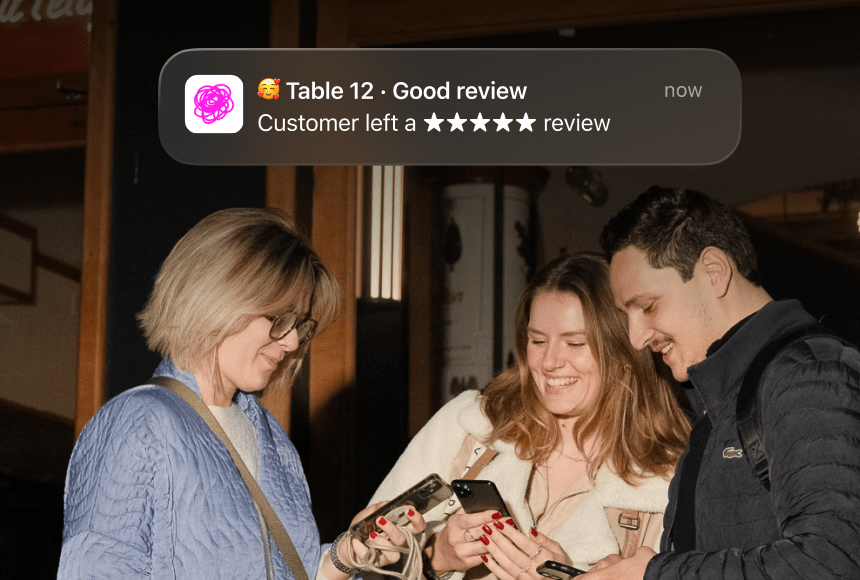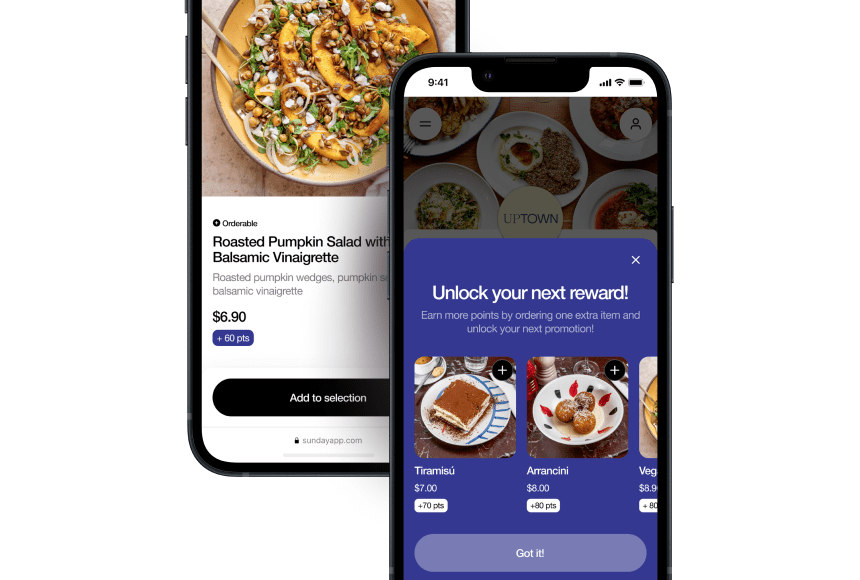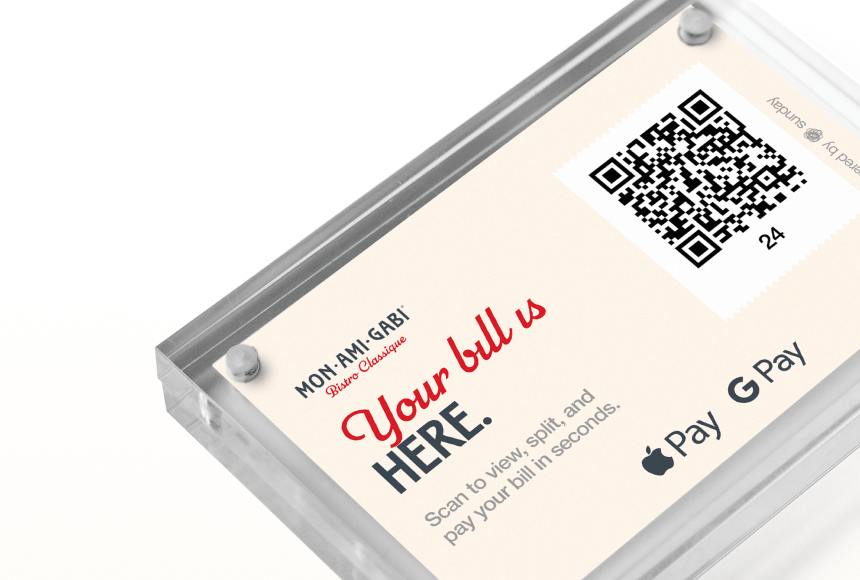
Troubleshooting Team Resistance to Restaurant Tech: Your Path to Smooth Adoption
Feeling Stuck in the Digital Age?
Imagine this scenario: You’ve just introduced an innovative ordering platform to your restaurant. You’re convinced it’ll improve efficiency, streamline your menu updates, and even boost check averages. But your team—servers, line cooks, hosts—seems more annoyed than excited. The fresh software sits idle, collecting virtual dust. So, you’re left thinking, “All right, what went wrong?”
Whether you’re a burger joint in Chicago or a sushi bar in Los Angeles, many restaurant owners face the universal challenge of getting teams on board with new technology. According to research from the National Restaurant Association, technology spending in US restaurants continues to rise each year, yet employee uptake often lags behind.
In this article, we’ll explore the reasons behind your team’s reluctance to embrace new tech. More importantly, we’ll uncover practical strategies you can apply starting today. No frills, no fluff—just proven methods to help your staff feel as comfortable using fresh systems as they are flipping omelets.
1. Why Tech Adoption Really Matters
Let’s address the elephant in the room first: Why bother focusing so much on new technology? Because restaurants live or die by their margins, and the right tools can reduce waste, enhance the guest experience, and ultimately increase profitability. Think about it:
- Faster Table Turnover: Automated ordering, digital payment, and real-time table management can shave minutes off each table’s stay.
- Improved Accuracy: Tablet-based ordering or QR code menus reduce the risk of lost tickets or misheard specials.
- Better Customer Experience: Payment solutions like sunday let guests settle their bills with a quick scan and leave a tip hassle-free—less friction means happier customers.
- Actionable Data: Many platforms gather insights on peak hours, frequent orders, and staff performance, giving you the intel to grow.
If you skip the adoption phase or do it poorly, these benefits never materialize. That’s why understanding staff hesitancy and tackling it head-on is a big deal.
2. Common Barriers to Adoption
Your restaurant employees probably aren’t trying to sabotage your new system. But sometimes, even the best-intentioned staff can stall adoption. Let’s look at what could be going on behind the scenes:
- Fear of the Unknown: Learning curves can be daunting. If your line cook is already juggling five dishes, an unfamiliar interface feels overwhelming.
- Lack of Proper Training: Halfheartedly introducing a new POS or payment solution without showing your team how and why it’s used invites failure.
- Perception of Time Drain: Many servers suspect new technology means extra steps or confusing tasks, slowing them down during peak hours.
- Resistance to Change: Let’s face it—humans don’t always embrace change. “That’s the way we’ve always done it” can silently shape your restaurant’s culture.
Take Manny, an experienced bartender who knows every cocktail by heart. Suddenly, he’s expected to use a tablet to input custom drinks? Without the right approach, Manny’s going to revert to scribbling on a notepad the moment you turn your back.
3. The Real Cost of Slow Adoption
You might shrug, thinking you can force the team to use the tool eventually. But partial or snail-paced adoption has real costs:
- Inconsistent Service: If some employees adopt perfectly while others don’t, your guests receive a patchwork experience. The table served by a tech-savvy server checks out in seconds; the next table waits for a manual receipt. Guess which group leaves happier?
- Wasted Investment: New software isn’t cheap. Subscriptions, setup fees, or equipment upgrades can rack up. If the system sits underutilized, you’re flushing money down the drain.
- Missed Insights: The best analytics engine in the world is worthless if data input is spotty or inconsistent. You never get a full picture of your restaurant’s performance.
- Lower Morale: When half the team struggles while the other half shrugs, tension rises. And a tense environment often leads to higher turnover.
A hybrid approach—where some old processes remain while new ones are introduced—can hinder both staff training and customer satisfaction. So, let’s focus on overcoming the adoption hump as a unified team.
4. The Psychology Behind Resistance
Before we roll up our sleeves to solve these challenges, it’s worth examining the psychology. We like routines, especially in a busy kitchen. When there’s a sudden shift, employees may feel:
- Uncertain About Efficacy: “Will this new tool even help, or is it just a fad?”
- Worried About Skill Gaps: “I’m not tech-savvy; this is going to show my weakness.”
- Protective of Status Quo: “I’ve been doing this the same way for years, and it works just fine.”
Understanding these emotions is half the battle. It’s not about labeling a server as “lazy.” Often, they’re simply safeguarding what they know. Recognizing these concerns is essential if you want to coach your team away from their doubts and into the digital realm.
5. Communication: Your Secret Ingredient
Remember the first time you tried a new recipe? You probably read the instructions carefully, checked ingredient measurements, and then proceeded. It’s the same with new technology—employees need a clear roadmap. You have to explain:
- What the Tool Does: Summarize new tech in simple, concrete terms. “Our new payment solution automates guest checks, speeds up tipping, and lets them scan a QR code to pay.”
- Why It Matters: Show them how it’ll make their workday easier. “If a guest can pay via QR code, you can turn your table faster, and that means more tips over the shift.”
- How to Get Started: Provide a clear step-by-step trainable process. “We’ll schedule short sessions in the morning so each person can try it hands-on.”
Never assume your team sees the same big picture you do. They’re in the trenches every day, so connect the dots in a practical way.
6. Practical Training Approaches
To keep your session from becoming a snoozefest when you unveil the new software, training has to be engaging. Here are some tried-and-true methods:
- Hands-On Workshops: Let employees handle the devices they’ll actually be using. If you’re introducing a new POS, have them take fake orders, split checks, and apply promos.
- Buddy Systems: Pair your tech-savvy staff with those more resistant. Peer-to-peer learning can be less intimidating than top-down instruction.
- Short Videos and Tutorials: People learn differently. Some prefer to watch a visual walkthrough, then try it themselves.
- Feedback Loops: After training, ask employees what they found confusing. Then refine your approach or follow up accordingly.
For instance, consider Chef Alex. He’s not only a whiz with new recipes but also loves gadgets. If you send Chef Alex to show a server how the new tip-collection feature works, it feels more like a natural conversation than a formal lecture.
7. Offering Real Incentives
People are more willing to adopt something new if there’s a direct benefit to them. If a new digital menu system can help a server clock out earlier or serve more parties (increasing tips), that’s a tangible plus. Align your incentives with the employee experience:
- Performance-Based Rewards: If your new platform can track order times, set a goal for speed and accuracy. Those who excel can earn gift cards or the best shifts.
- Easy Tip Tracking: Solutions like sunday make tipping a breeze for patrons, potentially boosting tip averages. Communicate that benefit clearly.
- Leaderboards & Friendly Competitions: Some restaurants find success with playful competition. Track who processes the quickest QR-code payments without errors, then reward them.
This approach works wonders because it transforms the technology from a forced process into a tool for personal improvement. Employees begin to look for ways to master it, rather than dodge it.
8. Building a Culture That Embraces Change
Long-term adoption isn’t a one-time event; it’s a cultural shift. If your restaurant has a history of ignoring software after a few weeks, employees notice. Breaking that pattern means ingraining adaptability into your restaurant’s DNA.
Here’s how:
- Lead by Example: If you (the manager or owner) still scribble on sticky notes while telling staff to use tablets, they’ll follow your lead, not your words.
- Celebrate Early Wins: The first time someone nails a dinner rush thanks to the new tool, highlight that success at the pre-shift meeting.
- Normalize Mistakes: Tech slip-ups will happen. Create an environment where employees aren’t punished for early missteps but can learn from them.
- Stay Curious: Keep a list of “pain points” employees mention. Often, future tech solutions or updates can address these issues—let the staff know you’re listening.
Culture is like the foundation of your restaurant. If the ground is shaky—resistant to all change— any new tool or strategy is more likely to fail. A healthy culture welcomes improvements as part of ongoing evolution.
9. Handling Pushback from Seasoned Veterans
It’s common for your longest-serving employees to be the most resistant. They’ve developed a routine that works, and they see new tech as an unnecessary disruption. What can you do?
- Highlight Their Expertise: Let them know you value their industry know-how. Frame the technology as a way to enhance their already formidable skills, not diminish them.
- Involve Them in Decisions: Seek veteran staff input on how to optimize the new tool. If they feel invested and heard, pushback often decreases.
- Offer Customized Coaching: A quick group training may not be enough for someone who’s still unsure. Provide one-on-one sessions so they can ask questions without feeling judged.
Remind these team members that they’ve seen how the restaurant world keeps changing—tableside ordering, advanced reservation apps—the next wave is always around the corner. Encouraging them to adapt actually boosts their job security.
10. Measuring and Improving Adoption Rates
“What gets measured gets managed,” said legendary management consultant Peter Drucker. If you have no visibility into how often your staff uses the new system, you’re essentially cooking blind.
Here are some metrics to watch:
- Usage Rate: How many of your staff members are using the system daily? Weekly?
- Speed of Service Improvements: Are wait times or check processing times improving due to the tool?
- Error Reduction: If you track typical errors (like incorrect orders), see if these numbers drop.
- Customer Feedback: Review sites or social media comments often mention changes in service experience.
Some platforms have dashboards where you can see how frequently employees log in or how many orders they process digitally. Share these findings during team meetings, praising improvements or addressing shortfalls. That way, everyone sees adoption as a collective goal, not just yours.
11. Making Tech Work Hand-in-Hand with Hospitality
One concern is that technology might reduce the personal touch. Servers may fear that tablets and QR codes will distance them from guests. It’s crucial to show that tech, when used smartly, enhances hospitality rather than replaces it.
- Faster Payments = More Interaction: If billing is faster with a QR code, servers have more time for genuine conversations with customers.
- Better Accuracy = Happier Guests: When the chef gets correct orders every time, the dining experience improves—leading to better guest satisfaction.
- Tech as a Tool, Not a Barrier: Encourage staff to treat the tablet or payment solution as just another service enhancer, like a well-organized tray or an easy-to-read menu.
Reassuring your team that technology won’t turn them into robots—and can even free up time for them to be more personable—is often the key to bridging that emotional gap.
12. Case Study: From Doubt to Delight
Let’s look at a hypothetical example: The Oak & Vine, a mid-sized bistro in a bustling part of town. They implemented a new digital payment system similar to sunday—guests can simply scan, pay, tip, and leave a Google review. At first, the staff hesitated for fear it would complicate the check-out routine.
- In the first week, only 30% of bills were settled via QR code. Most servers were still printing checks.
- The owner decided to offer a brief, reward-based challenge: any server who reached a 90% digital-payment rate got a $20 bonus at week’s end.
- By the third week, 80% of checks were settled digitally, and average tips ticked up by about 10% because the process was seamless for guests.
Once the staff realized how quick and easy it was—and that shifts ended more smoothly—enthusiasm soared. The bistro now sees a staggering 95% adoption rate. The real triumph? Guests appreciate the frictionless checkout, leaving more positive reviews online. That’s a win for everyone.
13. Ongoing Support and Maintenance
Great, your team is finally using the new tech. End of story, right? Not so fast. Technology, especially dynamic software solutions, evolves. Apps update, new features roll out, and hardware can break down. Plan for ongoing support:
- Regular Check-Ins: Host monthly or quarterly “tech huddles” to gather feedback, address concerns, and reveal upcoming updates.
- Designated Tech Point Person: Have at least one employee or manager as the go-to for troubleshooting. They’ll connect with the software’s support service if something fails.
- Update Training Materials: If the system evolves, refresh your training docs. Nobody wants to navigate a new layout with outdated instructions.
Technology is a journey, not a single event. Keep your staff informed and your restaurant will enjoy the rewards of staying ahead of the curve.
14. Empower Your Team for the Future
Implementing new technology is ultimately about empowerment. Servers who master digital menus and payment apps see themselves as professionals who adapt and excel. Managers who adopt scheduling software streamline labor costs and reduce stress. Everyone stands to gain—but only if adoption is handled in a holistic, people-first way.
Remember, you’re not just installing gadgets; you’re evolving your restaurant’s operations to meet modern expectations. Technology designed for the hospitality industry, like sunday, is meant to serve both staff and guests—leading to more satisfied diners, higher tips, and a thriving environment.
So, keep your staff engaged, celebrate incremental wins, and maintain open lines of communication. By doing so, you create a strong foundation where innovation is valued and nurtured. Ready to get started?
FAQ: Your Top Questions, Answered
How do I start if my staff isn’t tech-savvy at all?
Begin with user-friendly solutions. Conduct hands-on demos where employees can practice real scenarios—like entering an order or splitting a check—until they feel comfortable. Pair your tech-savvy staff with hesitant team members for peer coaching.
What if someone on my team flat-out refuses to learn?
Have a candid, private discussion to understand their concerns. Emphasize how the change benefits them personally—better tips, streamlined tasks, or opportunities to shine. If refusal persists after reasonable coaching, you may need to enforce policy for the sake of the broader team’s success.
How do I measure if the technology improves performance?
Track metrics like order accuracy, table turnover time, and customer satisfaction scores. Many digital platforms offer built-in analytics. Also, speak with your servers and chefs—sometimes their anecdotal feedback is just as valuable as the raw data.
Isn’t adding technology going to remove the personal touch in the dining experience?
Not if used correctly. Technology automates rote tasks—like splitting a check or taking payment—freeing staff to interact more with guests. The key is to view the tech as a tool that complements, rather than replaces, genuine hospitality.
What sort of budget should I expect for new restaurant tech?
Costs vary widely. Some services charge monthly subscription fees, while others have one-time setup charges. Start small with a pilot program, assess the return on investment, and scale from there. Be sure to consider training and support, not just equipment and software licenses.
Can I involve my guests in the adoption process?
Absolutely. If your new system includes a QR code payment or digital menu, consider a soft launch for regulars. Ask for their feedback. Happy guests often become your best promoters for the new way of doing things, and they’ll give constructive suggestions to improve the rollout.
How long does it usually take for a full tech rollout?
The timeline varies based on your staff size, complexity of the platform, and your training approach. Some restaurants see broad adoption in a couple of weeks; others might take a month or more. The key is consistent communication and support during that period.
Making your restaurant tech-friendly benefits not just the bottom line but also team morale and guest satisfaction. Identify your team’s sticking points, address them proactively, and create a culture that loves to learn and grow. With the right approach, you’ll see your crew not just accept new technology but champion it enthusiastically—and that’s a recipe for long-term success in a rapidly changing industry.
Find out more today
Drop us your details below and we’ll reach out within the next 24h
Get the full, detailed picture.
sunday elevates your business with insightful data, instant feedback and precise analytics.




